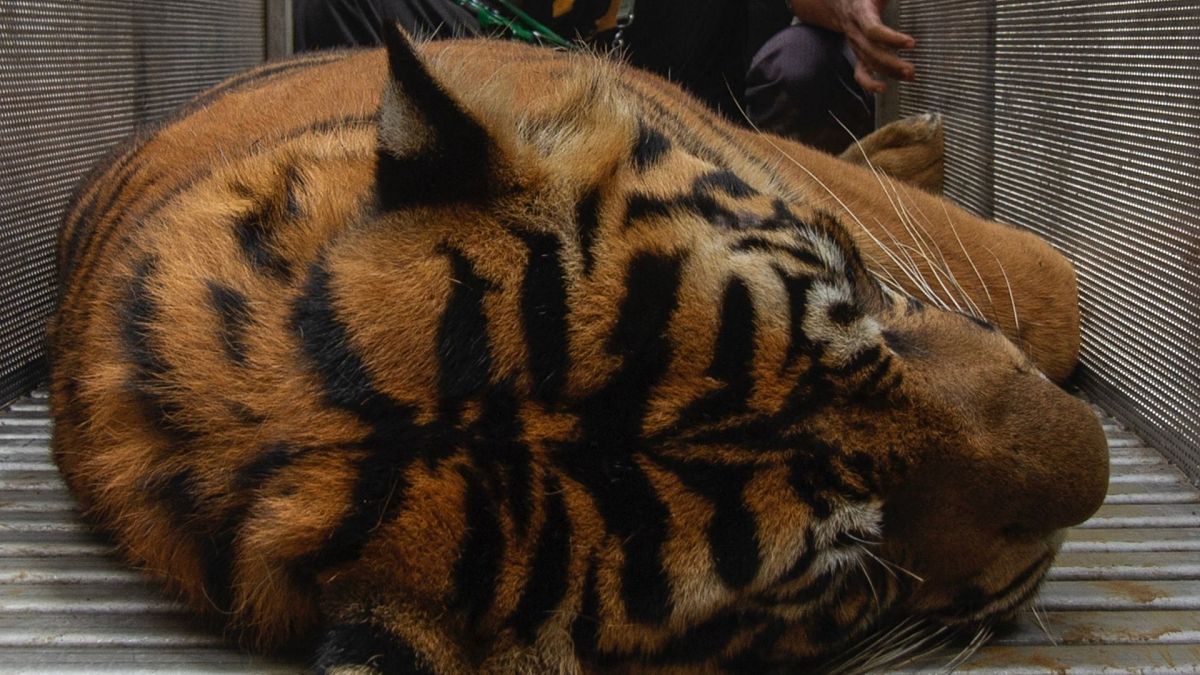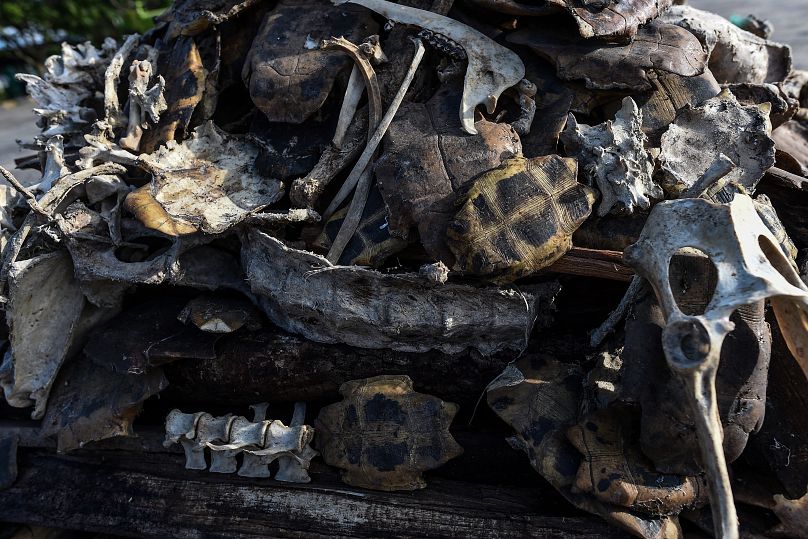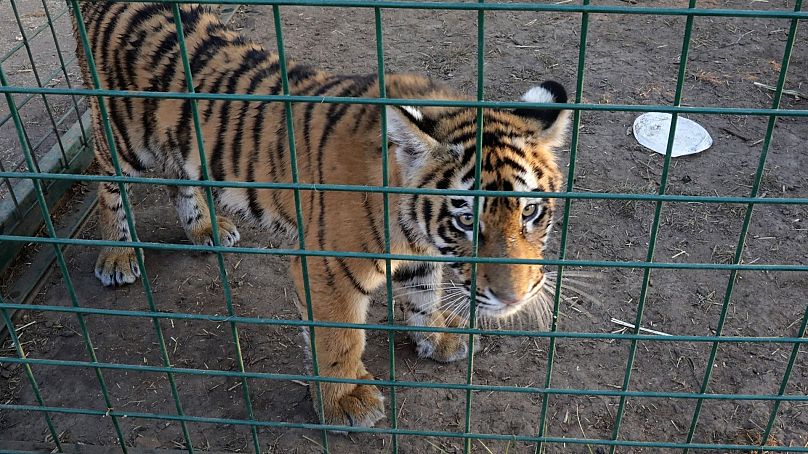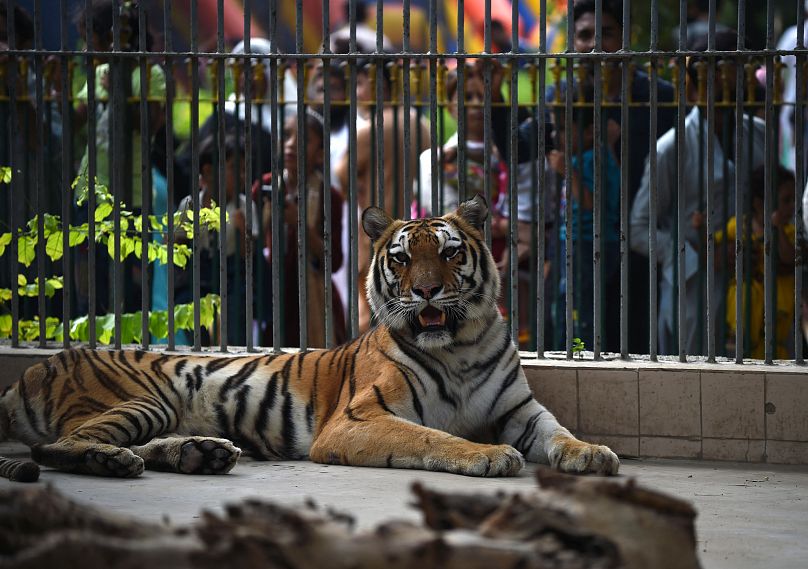We need international trade agreements that help reverse tiger declines and put an end to big cat farming.
Kieran Harkin, Wildlife Trade Expert at FOUR PAWS, gives us his take on the exploitative farming trade of big cats all over the world.
Tigers are not native to Africa. It’s a fact every schoolchild can tell you. So when you see images of these magnificent beasts against the backdrop of the South African veldt, you instinctively sense something is wrong even before your brain has processed the mismatch.
The sad truth is that there are hundreds of tigers in South Africa, right now. They are bred there for exploitation and commercial trade in live animals and their parts.
There are numerous tourist parks across South Africa where interactions with tiger cubs are offered. And when the animals become too old to be petted, they are often sold on elsewhere in the world or sold for body parts.
Most grimly, as documented by FOUR PAWS in a new report marking The Year Of The Tiger, South African farmers are breeding tigers for a trade in their parts, sold as trophies, so-called luxury items or to be used in Asian traditional medicines.
This demand for tiger and big cat body parts is playing a major role in the decline of all big cat species.
Captive vs. wild tigers
Under international regulations, a captive bred tiger has much less protection than a wild tiger.
They are treated as second class animals that do not deserve the same protection as those in the wild. The hunting of and capture of wild tigers is strictly prohibited, but it is still entirely possible to buy and sell a tiger that has been bred in captivity.
This is not only the case in South Africa but also in Europe and the United States.
South Africa is now the world’s biggest exporter of big cats and big cat parts. After repeated public access to information requests to the South African government, as well as site visits to private facilities breeding tigers, we found that there is no way of knowing exactly how many tigers there are in South Africa. Or, worryingly, how many animals and their parts have been traded within the country.
That no one appears to be keeping track is in itself an indictment of the South African authorities’ attitude to the issue.
Data gathered under the authority of CITES - the Convention on International Trade in Endangered Species - shows that between 2011 and 2020, 359 live tigers were exported from South Africa, to countries including China, Vietnam and Thailand. It’s likely that they were exported as breeding stock for facilities or commonly known as ‘tiger farms’ in these countries, with the intent of supplying tiger parts.
Meanwhile, in spite of a decision made under CITES which states that tigers “should not be intensively bred for a commercial trade in their parts and derivatives,” FOUR PAWS’ research on the CITES database suggests that in the period 2011-2020, there were 34 recorded exports of tiger parts. These were taken from captive-bred tigers, including skulls and skins, for commercial purposes.
‘Unspeakable’ exploitation of tigers
The details of the illegal trade in big cats from South Africa are close to unspeakable. A 2016 investigation by the Guardian found that brothers Bach Mai aka ‘Boonchai’ and his brother Bach Van Limh, international smugglers based in Thailand and Vietnam, were involved in the commissioning of the slaughter of hundreds of big cats sourced in South Africa.
An associate allegedly “supervised the boiling of their corpses to separate the bones from the flesh.”
Bleakly, the report notes that lion bones were sold as a “cheap substitute” for tiger bones.
In 2019, South Africa’s NSPCA Wildlife Protection Unit found a freezer full of lion and tiger cubs at Pienika farm in the North West Province. Animals on the farm were severely affected by mange, and algae grew in dirty water bowls. This is the reality of life for hundreds of tigers and other big cats.
Animal welfare is essential to South Africa’s future as a tourist destination, with the country keen to market itself as a home for sustainable safari trips. But this in no way squares with its apparently casual attitude to the breeding and export of tigers and other big cats.
Again and again, animal welfare organisations have found big cats kept for breeding in woefully inappropriate facilities.
This is a global issue
Like the tigers themselves, this is not a problem that is unique to, or native to, South Africa. The scandal is global. There simply is no ethical way to farm big cats for trade.
Legal trade encourages illegal trade by creating and sustaining demand for parts. The killing of captive tigers for their parts will inevitably be accompanied by the killing of wild tigers. It’s a fantasy to imagine otherwise.
With all five big cat species in decline in the wild and big cat farming increasing in many regions, it’s time to acknowledge that we need to do more to protect big cats and ensure their survival for future generations.
It is not acceptable to use the excuse that some are captive bred and therefore can be killed, while others deserve the highest protection. We need international trade agreements that help reverse these declines and that put an end to big cat farming and trade in their parts.
Until we do this, governments across big cat ranges and historical ranges cannot say they are serious about saving these majestic species from extinction.







